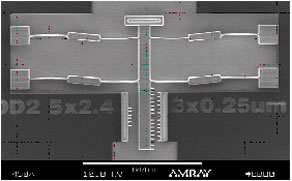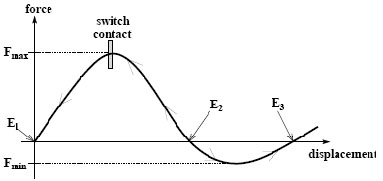Overview: For decades, engineers have augmented deterministic design optimization solutions with experience-based safety margins to account for the inherent variability in design parameters. Such experience is not available for new complex systems with new materials. Therefore, methods of optimization that directly account for the variability, such as reliability-based design optimization (RBDO), have been developed. However, these methods have been difficult to apply to realistic problems because they are unable to handle systems with implicit limit states that can be expensive to evaluate, noisy, or multi-modal.
This research aims to close this gap in the applicability of RBDO by enhancing the capabilities and improving computational efficiency. The latter is being achieved using approximation methods to build cheaper and smoother surrogate models of the limit states. These surrogate models are being used in several steps of the RBDO process: most probable point search, probability integration, and in the optimization itself. Several approximation methods are under investigation including polynomial response surfaces, kriging, multiple adaptive regression splines, reduced-order models, and multi-fidelity models.
Further investigation is ongoing to determine the utility of surrogate models when the original limit state is multi-modal. For this type of limit state, the most probable point (MPP) search must be able to locate multiple MPPs, and the subsequent probability integration must be able to properly account for these multiple failure modes. Another topic under investigation is the quantification and mitigation of the errors that arise from surrogate-based RBDO. Probability integration methods (such as first- and second-order reliability methods) rely on approximations to the limit state and, therefore, possess some amount of error. Information from the surrogate models used in the MPP search may be useful in reducing the error in the probability integration. This research will investigate the quantity of this error and how it propagates through the RBDO process, as well as methods to account for it in order to reduce its effect on the resulting optimal solution.
Example Applications: To illustrate the utility of these enhancements to RBDO, they are being applied to a collection of engineering optimization problems that current methods have trouble solving either efficiently or accurately. One such problem is the shape optimization of a bistable MEMS device.
 |
 |
This problem involves optimizing the shape and orientation of each of the beams that give this switch its bistable behavior while accounting for the uncertainties in the fabrication process. Namely, the feature width and residual stresses. The goal is to minimize the absolute value of the actuation force (Fmin in the figure above) while ensuring that the device is reliably bistable (the probability of Fmin being above zero is acceptably small.
Potential Applications: Most practical system computational models are complex and nonlinear and do not have explicit solutions. The application of model-based simulation to reliability assessment and design optimization for such problems can be computationally expensive. The developed methods achieve remarkable efficiency and accuracy, and are applicable to a wide range of complicated systems.